From the Middlesized Garden YouTube channel, we’re going to talk about the basics of gardening – you may be a completely new gardener or you may have a new garden or perhaps you’ve had a garden for a while and you haven’t yet got involved with it – and even for quite experienced gardeners, it can be helpful to go back to the basics, so i’ll be interested to know if you agree with me as to what those are, so do leave a comment in the description below.
I’ll put more resources in the description below along with time stamps so you’ll be able to find out more about each of the things that I talk about. If you’re new here the Middlesized Garden uploads weekly with tips, ideas and inspiration for your garden and if you want to see the videos when you open up Youtube tap the ‘subscribe’ button – it’s absolutely free – and if you want YouTube to tell you when a new video is uploaded tap the notifications bell.
Several different friends and family have moved into a house with a garden for the first time this year and they’ve rang me and asked ‘what shall I do?’ And the first thing I’ve said is ‘do nothing’ – take a chair out into the garden and sit there and see where the sun falls and look at what you’ve got and what you like and what you don’t like.
Move the chair around the garden – even in the smallest garden, it can look very different if you sit by the house and look out at the garden or you take the chair to the end of the garden and look back at the house. Make a list of what you’ve actually got – lawn, terrace, path, trees, shrubs, a shed, greenhouse – what have you already got and then make a list of what you want from your garden – do you want it as a place to entertain friends? is it going to be a family play space? do you want to grow veg? Is it important to have flowers all year round? Once you’ve got a goal in life, you can aim for it and that’s why it’s really important with your garden is to decide what your goal is and aim for it.
Then the first practical thing I would suggest is learn to identify your weeds. If you don’t know what weeds grow locally to you, ask a knowledgeable friend or pay a gardener to come around the garden with you for about an hour maybe two or three times over the spring and summer and then take a photograph of the weeds on your phone or find some other way of identifying them and, when you see them, weed them out.
I’d suggest doing it by hand unless you’ve got a really large garden -I personally find that weed sprays just drift a bit too much and they tend to kill off plants that you really want. There is a new attitude to weeds at the moment, which is that actually they are wild flowers and a weed is only a plant in the wrong place – and, for example, Jack Wallington, author of a book called ‘Wild About Weeds, designing with rebel plants’ would say that actually weeds grow very well in your garden, they’re beautiful, they attract wildlife and that we should be more tolerant of them.
And I think this is a very good approach, but until you can decide which weeds you want in your garden, you’ll need to know which are considered weeds – so this is why I would say ‘start by learning how to identify them’ – and I would suggest weeding them out, because the longer you leave them in, the harder they are to get rid of, so if you do decide you want to get rid of them, it will actually be much harder at the end of the year than it is at the beginning of the year.
Many people worry that if they let their gardens get weedy, then that will infect their neighbour’s gardens with weeds but that factor is relatively small – weeds are blown in on the wind or dropped as seeds by birds from actually miles around – so don’t worry about that too much, and also if your neighbor’s garden is weedy, don’t feel that that’s what’s causing your weeds.
There’s a video about the new approach to weeds in the description below and also my no-nonsense guide to weeding your garden. The next thing to work out is ‘where is the sun?’ and ‘how much sun do you have?’ In theory all gardens will have at least one sunny border, one very shady border and two part-sun, part-shade – but of course gardens can be irregular shapes, they don’t necessarily run north to south or east west.
However, you can’t really change the aspect of your border you could perhaps make a sunny border a bit more sunny if there’s a tree in it and you cut it down, but if you cut a tree down in a shady border (a north-facing border in the northern hemisphere) – you’re actually not going to create much more sun, so it’s important to see where the sun falls in your garden and how long it’s there for.
Any border that has six hours or more of full sun is called a sunny border and plants that need sunny borders will thrive there. Borders that have maybe three to six hours of sun are called partly shaded and you can probably experiment with what plants do well there. If your border is north facing in the Northern hemisphere, and/or has a high wall or fence it’s going to be a very shady border – but don’t despair, a shady border can be the best and most beautiful part of your garden and there’s a blog post in the description below with more about that.
There are a number of plants that do really well in shady conditions and also they tend to grow more slowly and weeds grow more slowly, so a shady border can be wonderfully low maintenance. There’s a video below with a north facing garden which is mainly in shade, which is absolutely charming so take a look at that as well.
So once you know which parts of your garden are sunny and which are shady and which are partly shaded, you can choose the right plants for that amount of sunshine, because it really does matter to put the plants in the places they want to go. Plants will forgive you an awful lot, but they won’t really forgive you the wrong amount of sun.
One thing you will see on many lists of ‘basic gardening tips’ is that you should test your soil and if you’re good with instructions and kits and jam jars and things like that, it is a really good piece of advice because you will find out exactly what your soil is made of.
But the fact of the matter is that most gardeners don’t test their soil – they learn which plants do well by trial and error – I’ve often said one of my favorite sayings is gardeners learn by trowel and error – by just planting things and seeing what goes well. The easiest way to find out what sort of soil you have is probably just to ask your neighbours.
There can be patches of different soil, particularly in larger gardens – for example, at Doddington Place Gardens which is largely on clay soil, they discovered in the early 1920s that there was a big patch of acidic soil and they’ve created a acid-loving garden with rhododendrons and azaleas and all sorts of things that thrive in acid soils, but which don’t usually thrive around here.
But in smaller gardens you’re less likely to have those little patches of unusual soil. However, there is one basic tip about soil that you do need to know – whatever your soil is like, you need to mulch it and what that means is that you layer an inch or two of garden compost, well-rotted manure or mushroom compost on it once a year – often in autumn or you can do it in spring or really you can do it at any time.
What this does is it feeds the soil, it helps suppress annual weeds and it gives the soil the nutrition it needs so that it can feed your plants. So testing your soil is not a must-have, it’s an ideal but – you know, don’t beat yourself up if you don’t want to test your soil.
However, what is a must-have is watering – you need to know really whether your climate in your garden is basically damp or dry and once again you can check this out on Google, you can discuss it with neighbors – for example, I live in Southeast England, which is very dry in the summer and I really find that plants that do well in ‘well-drained soil’ or labelled ‘drought-resistant’ do very much better in my garden than a lot of other plants.
It’s important, of course, to have facilities for watering and a tap within reach – a hose that can reach your borders will make a great deal of difference. And also you can add water butts, you can put these so that water that runs off your roof goes into water butts or the roof of your sheds – but a word of warning – a small water butt is not going to last very long in a drought.
If you can get two large water butts together or even three running into each other, you’ll be able to build up a reasonable supply of water and you’ll be able to use that for your watering. It is a good idea, however, to plant drought resistant plants if you have very dry climate and there is a video about that in the description below, because actually water is quite an expensive resource and it takes time to water, so really although you will have to water things like veg, I would suggest planting your garden so it has the right amount of water naturally if you can.
So how much time do you have? This is important because people sometimes are a little bit sneery about low maintenance gardens, but the fact of the matter is that if you have a busy life, you really do need a garden that doesn’t need too much work. Some plants need more work than others.
The low maintenance plants are trees, shrubs, perennials, ornamental grasses and bulbs. Most of these will only need attention once or twice a year and all plants do need some attention, so really there is no such thing as the ‘no maintenance garden’! I think it’s helpful to define what each of these is – we all know what trees are.
Shrubs are woody plants. They have a woody stem that stays above the ground all year round. Some shrubs are evergreen and their leaves stay on all year round and others lose their leaves in the winter and very often those ones have the most glorious autumn colors. Perennials are plants that stay in the ground year after year, so of course that’s quite useful because they just come back in spring.
Once again some of them are evergreen and stay on top of the ground the whole time but others – like asters – disappear underground, although there may be a sort of dead plant structure during the winter, which can be really attractive. Ornamental grasses are probably the lowest maintenance plants of all, and you will find an ornamental grass for a damp garden, for a dry garden, for a shady garden, for a sunny garden and they look really good planted together in clumps.
And bulbs – of course – daffodils, lilies, nerines, tulips, hyacinths – once again you can often plant those in year one and they will still be coming back in year five with relatively little attention from you. But the showstoppers in the garden are the annuals and the biennials. These are the ones with the blazing flower colours very often.
Annuals are plants that grow from seed in one year, they flower and die by the end of the year, so take something like a cosmos. I might plant seeds in my seed trays in, say, March. By June I’ll plant them out in the garden, I’ll keep deadheading them and then at the end of the year, in maybe October, I’ll dig them up and throw them away.
In very grand gardens they’ll plant annuals maybe two or three times a year in different beds because they have to keep their borders looking great all year round, but of course that is quite a lot of work. Biennials do the same they just do it over two years. I find it useful to grow a packet of seeds – just one packet a year – of something really colorful like cosmos or antirrhinum and then use them to plug gaps in my border – that’s not too much work, but having a great number of bedding plants – which are annuals and biennials – in your garden does mean you’re going to have to keep replanting and deadheading and quite often fertilizing, because they they grow very fast – and that is more work than just having perennials, bulbs, ornamental grasses and shrubs.
But in the end it’s about what you want for your garden and if you want a blaze of glorious color then annuals and biennials are fabulous. So what about tools? I’ve got a seven essential tools video and blog post in the description below but broadly speaking you need a spade and a fork, you need a hand trowel and a hand fork, you need secateurs and possibly loppers and some kind of a weeding tool.
Traditionally that’s been a large hoe, but i have a lovely hand hoe which I really love and also I have a sort of right angle something called – I think a paving scraper or a patio knife – it’s absolutely brilliant for getting rid of weeds and a bag to carry them in. The Middle-sized Garden actually has got its own carrier bag which I’m hoping people can use for their tools and it’s got my favorite saying gardeners learn by trowel and error’ and that’s the first time I’ve tried doing anything like that, so you can find that in the description below.
And then what about resources? One of the basics of learning about gardening is ask other people for advice, visit other gardens – have a kind of go-to for monthly jobs – something like the Royal Horticultural Society in the UK and all countries have their equivalent and they’ll have ‘gardening jobs, month by month’ but I also think it’s important to hear how real people do things and that’s where the strengths of blogs and Youtube channels like the Middle-sized Garden come in because we’re real people and we make mistakes and we tell you how we make our mistakes – and quite often, that can help you work out that you’re actually not following the instructions wrong, it’s just a bit more difficult or perhaps a bit easier than it sounded when you looked it up.
It’s great to have a good basic gardening book as well and I’ll put some of those in the description below. And above all, remember that even the most expert gardeners have killed thousands of plants – every time I interview a top gardener he or she always says that people should never worry if a plant dies – quite often it’s not your fault, it’s not because you did something wrong, it’s just that something didn’t work out and that’s how nature is.
So don’t feel guilty, don’t feel worried, just try again.



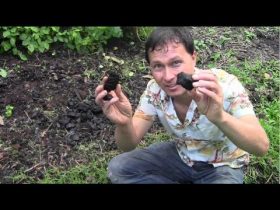
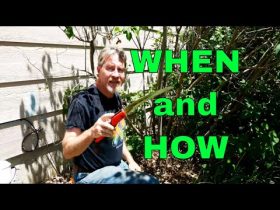

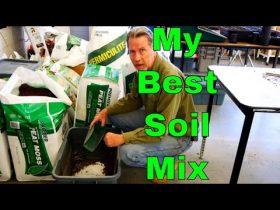
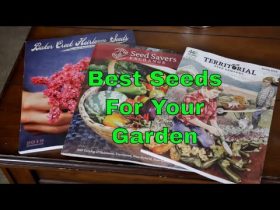
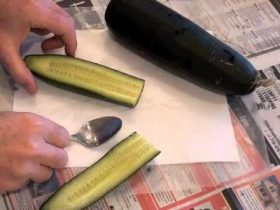


Leave a Reply